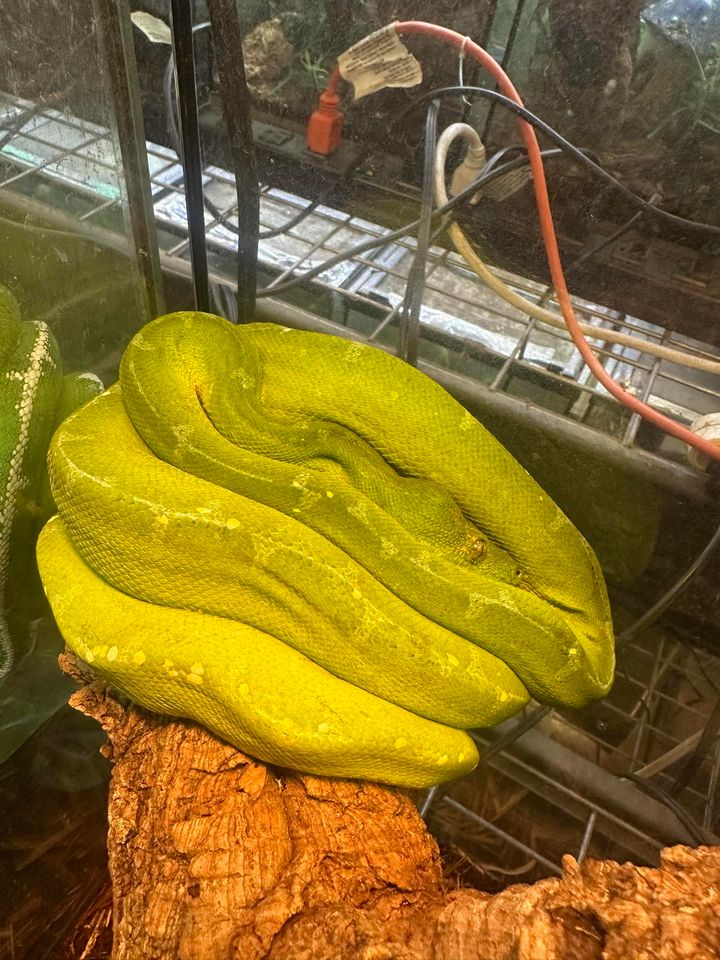Photo Disclaimer
Description
Green Tree Python (Manokwari)
Morelia viridis
Common Names: Green Tree Python, Manokwari Green Tree Python
Species Overview
-
Size: Adults typically reach 4–6 feet (1.2–1.8 m), with females often being bulkier.
-
Appearance:
-
Manokwari locality GTPs are well known for their vivid emerald-green base colour accented by strong blue dorsal striping or blue lateral scales.
-
They may display more consistent blue tones than Jaya Pura or Sorong localities, sometimes extending along the spine and flanks.
-
Neonates hatch red or yellow, later transforming into green adults with varying degrees of blue.
-
Pattern expression can range from nearly solid green with light flecking to heavy striping and blue highlights.
-
-
Distribution: Endemic to the Manokwari region of West Papua, Indonesia, located on the northern coast of New Guinea.
-
Habitat: Occupy tropical lowland forests and coastal rainforests, thriving in humid, arboreal environments with dense vegetation.
-
Behaviour: Arboreal ambush predators, striking from perches to capture birds, reptiles, and small mammals, especially active during the night.
Captive Care
-
Enclosure: Provide a vertical enclosure of at least 24–36 inches in height, with multiple sturdy perches arranged at different levels.
-
Temperature & Humidity:
-
Basking perch: 86–88°F (30–31°C).
-
Ambient gradient: 78–82°F (25–28°C).
-
Nighttime drop: 72–75°F (22–24°C).
-
Humidity: Maintain 60–70%, with daily misting and periodic spikes during shedding.
-
-
Diet: Juveniles begin on small mice, progressing to rats as they mature. Adults should be offered small to medium rats every 10–14 days.
-
Behaviour in Captivity: Manokwari GTPs are typically alert and active, sometimes defensive as juveniles, but with proper husbandry, they adapt well to captivity.
-
Special Considerations: Naturalistic, arboreal setups with ample climbing structure, humidity control, and minimal disturbance are essential.
Genetics Note
-
The Manokwari Green Tree Python is a pure locality form, not a morph.
-
Known for its consistent blue highlights, it is often used in selective breeding to strengthen blue-line projects.
-
Maintaining locality purity is considered important among serious breeders.
The Green Tree Python (Manokwari) is prized for its emerald green body accented with strong blue highlights, making it one of the most visually striking New Guinea localities.

